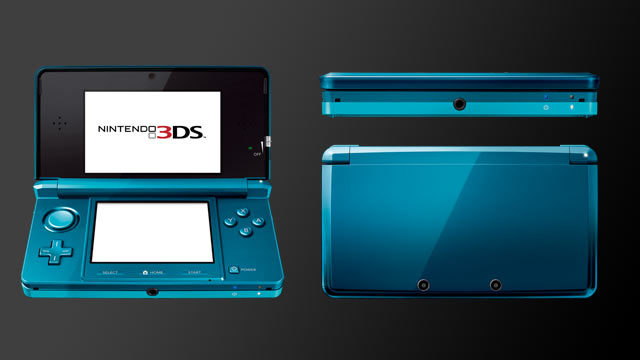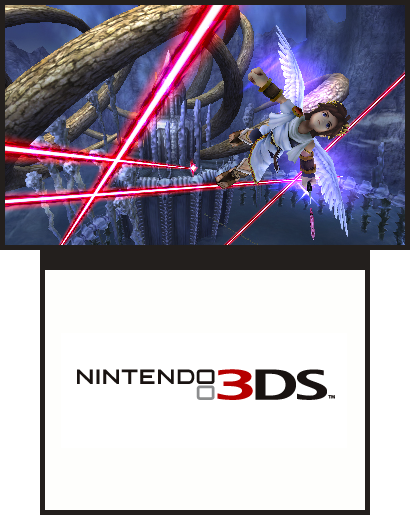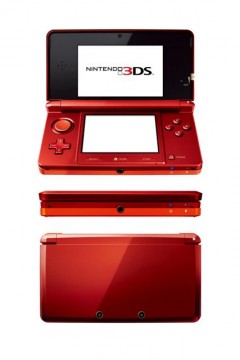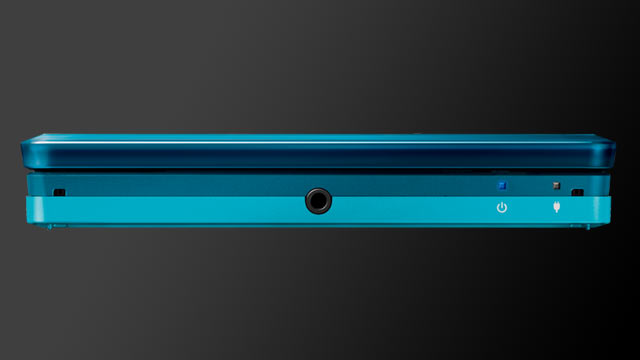
While Reggie may have recently said that the 3DS hardware we got our hands on at E3 2010 may not be final, odds are good that whatever comes out by March 2011 will be a lot like what we saw in Los Angeles. And while we’ve talked about and filmed the new handheld on Nintendojo, we haven’t put the tactile experience into words, so here’s our summary of highlights of what it’s like.
Please note, again, that our impressions may not be representative of the final product. One 3DS demonstrator specifically told me that Nintendo was deliberately asking each person who used the device what they thought in order to further refine and tweak the hardware prior to mass producing it. The demonstrator even went so far to describe the prototypes we go our hands on as “handmade,” and given there was no OS to jump out to and no open game card slot, the prototypes may have not even had all the technology the final versions will.

The 3D works. This seems to be a question infinitely asked, but yes, it’s true. The 3D effect works, very similarly to a 3D movie, but without the glasses. It’s literally mesmerizing when it works, and even if you break the illusion with an errant tilt of the hardware, you’re so hypnotized you quickly tilt the system back to a position that displays the 3D correctly. It’s actually so effective, even on a small screen, that some gamers are liable to overreact when items fly “towards” the user.
…But there are caveats. You do have to hold the system in a “sweet spot” that’s centered with your face, and the screen is held level. Tilting the screen left and right more than a few inches will distort the image, and you’ll see it appear to split into two “ghosts,” which is more pronounced the further you tilt the system and also the more the 3D slider is set to max. The distance you hold 3DS away from you doesn’t seem to make much difference, and tilting the system forward or backward only dims the the brightness of the picture. Given that you need to be facing the system straight on for optimal visuals, there’s not much of a viewing angle for anyone sitting to the left or right of you when the 3D slider is set to max– DSi XL this is not. However, turning the 3D effect off makes the screen more viewable at greater angles, provided the silvery, shimmering finish of the screen doesn’t get in the way.
 Moving the 3D slider is like collapsing an accordion. Imagine all the layers of a 3D image as if they’re layers in a diorama, suspended within an accordion that you’re looking through. Sliding the 3D effect down is akin to collapsing that accordion– the depth of the image gets shallower until it’s flat. Additionally, your eyes will pick up the image seeming to “split” or join back together as you move the slider back and forth.
Moving the 3D slider is like collapsing an accordion. Imagine all the layers of a 3D image as if they’re layers in a diorama, suspended within an accordion that you’re looking through. Sliding the 3D effect down is akin to collapsing that accordion– the depth of the image gets shallower until it’s flat. Additionally, your eyes will pick up the image seeming to “split” or join back together as you move the slider back and forth.
Focusing on items at the edges or sides of the screen may make other objects seem faint or flickering. I only encountered this when I flew my Arwing far to the right or left side of the screen in Star Fox 64 3D, but when I did so and looked at incoming enemies on other sides of the screen, they didn’t look crisp and solid as I expected. I was told this was a common complaint by one of the 3DS custodians.
The slide pad can be moved further than you think, but it’s also loose. From my memory, which may have been overwhelmed with excitement, the slide pad’s surface seemed able to move about half its width beyond the indentation it sits within– greater freedom than PSP’s analog nub. However, there also wasn’t a lot of resistance when moving it– in games like Star Fox 64 3D, for instance, it was easy to oversteer your Arwing because the slide pad slid so easily. To play decently, I had to exercise more finesse with this interface. This is something that may change before launch.
The stylus is telescoping. Unfortunately we didn’t get a chance to fiddle with it, but it was silver and metal, like an old fashioned TV antenna. Also, it slides into a spot next to where the game card goes in, on the top edge of the device.
The buttons aren’t anything drastically different. The face and shoulder buttons function and feel the same as previous DS models– there’s likely to be a subtle difference for the most sensitive of hands, but nothing jumped out at us.
Why have tilt functionality when tilting ruins the 3D effect? We’re not sure how much the tilt functionality is keeping up with the Joneses, but we didn’t see anything that revolved around it.
The handheld is very light. This may be because we were working with prototype units that might not have had all their innards included, but the 3DS was surprisingly lightweight– lighter than any other DS model I’ve used.

There are some interesting features on the handheld’s edges. There is what appears to be an IR sensor window on the front edge of the system, next to where the game cards are slid in. In addition to the main game card slot, there’s a slot specifically for SD cards on the left edge of the device. Last, next to the power light indicator on the bottom edge, there’s a light with a heart icon label.
The finish of the prototypes and the colored models inside the clear glass cases was glossy. No matte finishes here. That makes these devices fingerprint prone. The colored prototype shells had a metallic finish that wasn’t quite mirror-reflective, but it was closer to mirror than the less reflective metallic fleck paint job previous DS Lite models have had. Also, in addition to the panel the 3D screen sits within being black (likely to make viewing of the screen and movies easier), the panel the touch screen and face buttons sat on was a darker tone than the color of the hardware’s exterior. We really hope the colors we saw come out at launch– the DSi XL’s initial colors did, at least. But then there’s the red and green Wii concept models that have yet to see release anywhere.




 ShareThis
ShareThis







When Shiggy demonstated the 3DS motion capture in his “Iwata Asks” session, he mimed holding the 3DS in front of his face, and moving his whole head with the steering of the system. He mentioned using it to aim in an FPS, but had he actually been holding the thing, it would never have left that “sweet spot”.